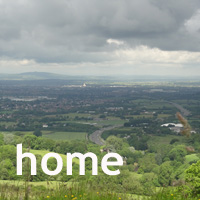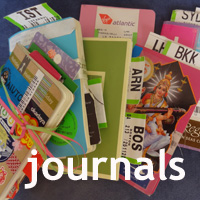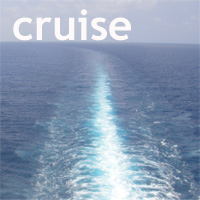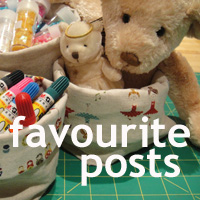Not quite finished
 Friday, March 31, 2017 at 11:15AM
Friday, March 31, 2017 at 11:15AM
A busy couple of days means I didn’t quite get to finish our Swiss stories.
Our flight wasn’t until 6pm or thereabouts, so we had a day to enjoy. We wanted to spend some time in Zürich so headed for the airport and returned our rental car first.
Zürich airport is very familiar and works brilliantly! First thing to do was to leave our luggage in a locker for the day.
Squeezing in two suitcases and two carryon bags wasn’t easy, but I left my hero to do the tricky part whilst I went to get 9CHF in change – by buying chocolate of course (and of course, I took a photo of the locker, just in case we forgot the number or location)
Just gone 11am then, and a train due to Zürich Hauptbahnhof at ten past. Love it.
But there’s tickets to buy first. Yes, of course there’s a machine right there and yes, of course it’s all in working order and takes credit cards…
Down the escalator onto the platform with plenty of time to spare!
At 11.10am precisely, the train pulled into the station and we hopped on board. Efficient, no?
We’ve spent quite some time using Swiss railways and always enjoy travelling by train here.
In just ten minutes we were arriving in the city.
Our train was going on through Zug and Bellinzona to Lugano – how lovely it would be to stay on board and ride to the sunny side of the Alps and spend the day with Toni and Pietro, our sweet friends there! But the city awaits us…
It was a greyish morning, but thankfully dry. We planned a simple stroll up the Bahnhofstrasse and had a couple of things on our list to look for.
We always enjoy a browse in Globus a stylish and very attractive department store with rather enticing displays.
Something often catches our eye here and today was no exception. Look at these nifty table lamps, designed like books! We opened and closed them, looked more closely (they appeared to be battery operated, so could be used anywhere). Hmm. What do you think?
As we stood, thinking of several places where one of them would fit right in at home, I turned one over and spotted the price.
We didn’t need one anyway!
A little further along the street then, heading towards the lake and aiming to be at our favourite restaurant for a late lunch, we dropped into a couple of other shops for knitting yarn and bath salts!
We took a closer look at the new version of the TAG smartwatch and I reflected on the #connectedtoeternity hashtag. Now, that would be something, wouldn’t it?
We still had one more thing on our list – the Zuger Kirschtorte I referred to in my first Swiss post. Any local konditorei will probably have one, but the most reliable source in Zürich is Sprüngli who are to be found in several locations, including our favourite shop in Paradeplatz.
Luck was not with us, though. No Kirschtorte! All is not yet lost…I suppose there’s the shop in the station and another at the airport. We’ll have to try elsewhere and keep our fingers crossed.
Both of us were beginning to get hungry by now, but wanting to leave lunch until later, we carried on to the end of the Bahnhofstrasse to Bürkliplatz where we knew we could pass a happy few minutes.
We found a bench by the water and looked over to the Uetliberg and the Enge area where we rented an apartment for a week a couple of years ago.
Feeling (and possibly looking!) like our Grandparents, we sat on the bench and watched the world go by for a while.
We knew there was a steamer due, for the lunchtime round trip of the lake and thought we sit and watch it arrive.
People were turning up on the jetty to wait for the service and provided us with ample to talk about!
So we just sat and watched, perfectly happy to do nothing for a while.
There were pretty ducks to watch, safely out of my scary zone and far more interested in what lies beneath the water than in me.
Sad pair that we are, we tried to guess where it might pop up next!
Eventually though, as the boat left the jetty, we just had to haul ourselves up and make our way to the Zeughauskeller, just off Paradeplatz, because lunch was not going to come to us!
It’s a long time favourite, reasonably priced and serving good, hearty Swiss fare just as we like it.
We thought we might just about have finished by the time they needed our table back.
Zürich is a great, walkable city and though we could have taken the direct route back to the station, with full tummies and plenty of time, we decided to take the scenic way back.
Past our favourite Storchen hotel, newly renovated. We once had the room with the stork outside – thankfully, he didn’t leave any surprises
Sometimes, it’s hard to imagine that we are in one of Europe’s main business hubs.
But we mustn’t forget we have still a kirschtorte to find.
The first Sprüngli shop in the station had also sold out but the helpful assistant directed us to the other station shop and thankfully, there was the cake of our dreams! Well, perhaps that’s going a bit far… Suffice to say, we were glad to have ticked the last thing from our list.
Time to return to the airport, collect our luggage and check into our flight home.
Which we did without further incident.
So what of the cake and the other little chocolatey favourites which we couldn’t resist? When I took the photograph of our luggage, the bag was safely in the hands of my hero. It safely made it through security, with the usual joke from the customs staff as it went through the scanner: will it come out the other side or will it disappear mid scan?
The (very expensive, of course) cake was carefully placed in the overhead locker of the plane and retrieved at Heathrow, where we made our way to collect our car at the valet parking facility. It was only somewhere near Windsor that my hero slapped his forehead, made a hasty decision to leave the motorway at that junction and pull into a layby.
“I don’t remember putting the cake in the car”.
We returned to Terminal 5, screeched into a car parking space and I stayed in the car whilst he hurried back to the space where our car had been parked.
No cake.
There in the Valet parking office were three or four chaps sitting around a blue and white carrier bag – “Hello Mr Thomas, did you leave this behind?” They had retrieved it from the parking space when the next car had been brought and taken it into the office. They joked that had they known it was a cake, they might have had a tea party.
I can’t tell you how good that Zuger Kirschtorte tasted when we finally got to eat it!
Oh, and what about those light-books (book-lights)?
Delivered by Amazon Prime the very next morning and looking identical to this one. We love it.
 Switzerland in
Switzerland in  favourite,
favourite,  fun,
fun,  travelling
travelling 






